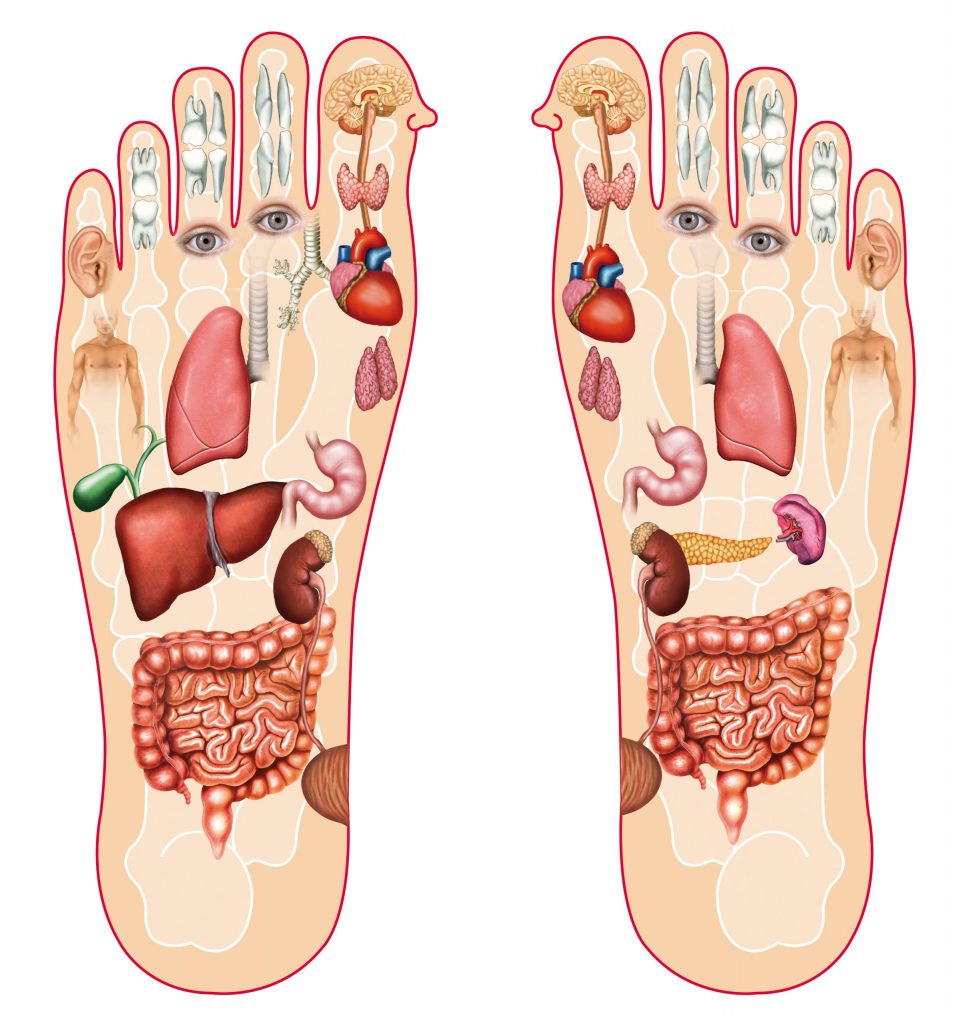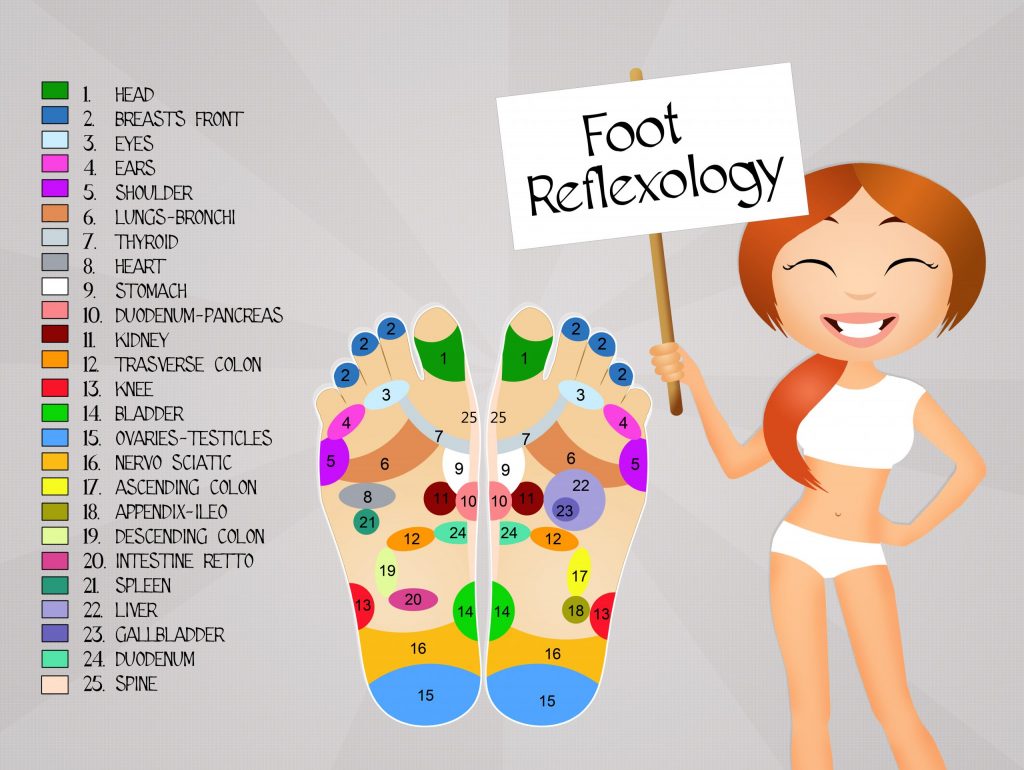
About reflexology
Reflexology is a non-invasive complementary health therapy working on the hands and feet. This promotes a deeper relaxation and helps to reduce stress, which is a key factor in promoting good health and wellbeing. Reflexology is based on the theory that there is a reflex point on the hand’s, feet, lower legs face or ears that corresponds to different parts of the body.
Reflexology promotes relaxation for the client, providing a platform to have one to one attention and support through touch therapy in an understanding listening environment.
Reflexology can be used safely alongside conventional healthcare to promote better health for clients.

Theory behind reflexology
All systems and organs are mirrored or reflected in smaller surface areas of the hands, feet, ears, and face (see image below).
In the 1920’s the first western reflexology foot map was created,
Reflexologist works on reflected areas with their sensitive fingers, aiming to bring those areas back to optimum balance, therefore aiding the body to work as well as it can. Reflexology works on an individual basis to aid well-being.
Scientific studies support the potential positive effects that can be achieved by touch therapies.
How can it help me?
Trained reflexologists do not claim to cure, diagnose or prescribe. Reflexology is a tailored individual treatment, taking into account both physical and non-physical factors that might be affecting your well-being. The only way to find out if it works for you is to try it!
The aim of the session is to help bring the body back to optimum balance.
Following treatment, you may feel less tense and more relaxed.
Sleep, mood and well-being could be improved.
We live in a very fast-paced society dealing with high levels of daily stress.
It is becoming more necessary for people to take more responsibility for their own healthcare needs. Reflexology may be one of the ways to mitigate the stresses of modern life
What happens during a treatment?
A client consultation will be carried out during your first treatment. You will be asked to sign a consent form for the treatment. This information will be kept confidential.
During the reflexology session, you will need to remove your socks and shoes.
The therapist will then use their hands to apply pressure to the feet or hands. You may feel areas of some discomfort during the treatment, but generally, the experience should be relaxing.
The therapist may recommend a course of treatments depending on the client’s needs.
How will I feel after a reflexology treatment?
The reflexologist will request feedback as this gives an indication of the response to the treatment which in turn will help the therapist to tailor a treatment plan.
Following a reflexology treatment, you may have a “healing crisis”. Some general reactions of healing crisis after reflexology can include: increased urination, flatulence, more frequent bowel movements, aggravated skin conditions, increased perspiration, increased secretions of the mucous membranes and disrupted sleep patterns.

